- Home
- Gary Paulsen
The Car Page 2
The Car Read online
Page 2
The ringing phone awakened him and he was sitting up, grabbing for the receiver on the end table, before he was fully awake.
“Hello?”
“Mr. Anders?”
“Uhh . . . yes.”
“Your phone bill is two and a half months past due, Mr. Anders. Could we expect some payment on it this week?”
“Well, see, the truth is . . .” Terry didn’t know what to say.
“The thing is, Mr. Anders, if you don’t pay on it, I’m afraid we’ll have to cut service.”
Terry was fully awake now and realized what had happened. His mother and father had let bills go before they left. He lowered his voice, tried to sound older. “I understand.”
“All we can give you is another two weeks.”
“Fine.”
“Then you’ll send some money?”
“I’ll do what I can.”
“Thank you, Mr. Anders.”
Terry hung up and stood. Between sitting and standing the whole conversation on the phone left his mind.
The car.
He had to work on the car.
He went to the kitchen and ate some lunch meat. There was some mustard in a jar and he smeared it on the meat before eating it, and while still chewing he made his way to the garage where the car waited.
He was at the point where the body had to be right to give him places to bolt new things—like putting the radiator in place. It needed side mounts to hold it, and without the engine compartment there would be no side mounts.
He started with the compartment itself, bolting the red side panels onto the frame, squirting thread-lock on each nut to make sure they wouldn’t vibrate loose later, even though he was also using lock washers.
With the compartment in place the pieces started to look like a car, and he stepped back to study it.
He smiled. Not much of a car, but there was a shape coming, a look to it. The side compartments on the engine, where the sweeping fenders would bolt on, gave the kit the beginning look of a car, started to show some of the curves.
He finished bolting the radiator in place, adjusting it to clear the blades of the fan mounted on the front of the engine. The hoses from the radiator to the engine and back took some work, but Tom had ordered them right, and by twisting and turning and warping them, Terry finally got them into position and clamped on tightly.
Steering was next. The tie rods and steering gear were already in place on the frame, but there was no wheel or shaft coming through the fire wall to steer the car with. He found the shaft and turn indicator bracket but there was no wheel, and the whole assembly was obviously from another car—as were the engine and wheels.
For a moment it threw him until he found the title of ownership in a plastic bag taped in place in the back of the instruction manual.
All the parts not from the kit—the four-cylinder engine, the wheels and tires, the steering column, and the brakes—were from a 1974 Ford Pinto. The title and papers from the original car were in the plastic bag along with a note from a machinist:
“Tom,” Terry read aloud, “I’ve gone completely over the engine and rebuilt it to tighter tolerances than they have in the factory. It will be better than new. Just break it in slow, real slow, and let the rings seat on their own without pushing it.”
And in a last box, leaning against the inside of the frame and hidden from view, Terry found the steering wheel.
“It’s beautiful. . . .” He spoke aloud when he opened the box. The wheel was black leather, polished and hand-rubbed, with brushed stainless steel spokes. In the middle was a horn ring with the Bearcat emblem in the center. There were also complete instructions on how to mount the steering wheel, and he put it in just because it looked good, even though the dash wasn’t quite complete yet and all the instruments weren’t hooked up.
When the wheel was in and lined up right and tightened down, he stepped back and looked at the overall car again. Having the wheel in place gave it an even more complete look, and he smiled, almost laughed.
He was going to have a car.
It was right there. All the rest of what he needed was right there in front of him. The parts just needed to be bolted together.
But right now he was hungry—worse, starved—and there was nothing in the house. He took ten dollars from his stash and rode his bicycle to the supermarket nine blocks away, and all the way, with every push and pull of his foot on the pedal of the bike, he thought, Next time I go to the store I’ll take the Cat.
4
THE CAR SEEMED DONE.
Terry had lost track of time. He sat on the step leading from the house to the garage, drinking milk directly out of the carton and eating lunch meat rolled in a tube and dipped in peanut butter and then swirled in a mustard jar.
The grimy window at the side of the garage showed it to be dark outside. Other than that he had no idea of how long he’d been working. He’d stopped to sleep several times, catching naps on the couch or chairs, once sleeping for an hour or so sitting in the black leather seat of the Cat, looking over the hood before he’d attached the windshield.
It was done.
But it was like a large model. Or a toy, like Pinocchio. Pretty, but without life. It sat gleaming in the overhead light, beautiful curved lines and streamlined shape, looking more like an updated version of the old 1950 MGs. An almost square radiator grill, a flat windshield angled slightly back so it wouldn’t catch the wind, doors that dropped so low it was possible to sit in the car and easily touch the ground, shiny silver-spoked wheels, chrome stand-alone headlights, and a squarish back and trunk lid with a chromed luggage rack. There was no top, no cover of any kind from the weather.
“Do you run?” Terry asked the car, not feeling strange in the least that he was talking to the Cat. He had spoken to it all the time when he was building it, sometimes smiling, sometimes swearing when something didn’t fit quite right. Installing the interior carpeting and dash padding had been a headache as had the gas tank, which he was still worried about. “Will you start and run?”
He got in the car and sat in the driver’s seat, looking at the instrument panel. Hooking everything up had been easier than he’d thought. There was a wire harness with all the correct jacks and plugs from various parts of the engine to the VDO instruments on the dash. They were easy to read, black with white letters and needles, and the tachometer had an adjustable fluorescent orange indicator where redline should be. Lights, indicators, everything was hooked up.
But the battery was dead, or nearly so, and while it made the lights work well enough, Terry wasn’t sure there’d be enough juice to get the motor turning to fire the ignition.
He decided to use a trick he did with small motors when they’d been sitting a long time. He raised the hood—it went up forward—and propped it with the two metal arms that popped into little side brackets in the hood. The motor looked clean enough to eat from, and he unscrewed the top of the air cleaner and removed the cover to open the throat of the carburetor.
By the workbench he had a five-gallon gas container he’d carried from the gas station on the corner. Most of the gas he’d already poured into the small opening of the filler cap for the Cat. But he’d saved some, and he poured half a cup in an empty soda bottle.
He held the choke plate open in the carburetor with his finger and trickled a couple of tablespoons of the gas from the soda bottle directly into the carburetor.
He quickly jumped into the driver’s seat, turned the key on, and pushed it over to the start position.
The motor growled lowly, hesitated, seemed to almost stop, and then fired with an explosion, shooting a spurt of flame out the top of the carburetor that lit up the whole interior of the garage and made Terry jump four inches out of the seat.
Then it died.
But before it died it turned over six or seven times. It was enough to turn on the water pump and get the antifreeze moving through the system, and it also worked the fuel pump and brought gas up from the ta
nk to fill the line to the carburetor.
Terry took the soda bottle and dripped a bit of gas into the top of the carburetor throat, then sat in the seat again and reached for the key.
He crossed his fingers. “Come on—there’s almost nothing left in the battery. One time.”
He turned the key to start.
Another low growl, the battery dying, the engine turning, grinding, and Terry started to shake his head, knowing it wouldn’t go.
It fired again, shot flames out the top of the carburetor as it had at first, but this time it sucked gas from the line back down in, pulled air in, and the motor started with a bellowing roar out the glass-packed, straight-line muffler.
“Yes!” Terry said, his foot on the accelerator. He revved the engine gently a couple of times, then remembered he had the garage door closed and he was about to gas himself. He left the car running and opened the garage door and discovered it was starting to turn gray in the east. Early morning. It must be about four, he thought, or maybe three-thirty.
He went back to the car—he thought of it always as the Cat now—and checked the gauges. Oil was running at 60 psi, battery charging—he had had no idea if the alternator would work or not and was glad it seemed to be all right—and the tachometer showed the car to be idling at about 700 rpm. Just a hair slow, according to the instruction book, but he would adjust it later.
Everything seemed to be working right, and he shook his head. It couldn’t be that easy to build a car. Something had to be wrong.
He pushed the clutch down, put the Cat in reverse, and remembered he’d never driven a straight-stick car before. In fact he’d only driven a car three times—when his friend Thor’s father had let them both drive out in the country on a dirt road.
He let the clutch out and the car jerked backward once and stalled and died.
“Come on, Cat. . . .”
He put it in neutral and started it again, pleased when it kicked right off. Once more the clutch in, the stick to reverse—he eased the clutch out and gave it a little gas and it slid backward half a car length before dying again, the rear end of the car hanging out of the garage.
“Damn.”
One more try, he thought. How hard can it be? People do it all the time.
Neutral, restart, clutch in, reverse, and more gas this time, lots of gas, run the tach up to almost 2000 rpm—he thought of it as two grand—and he popped the clutch.
Too fast.
The car hesitated, seemed almost to die once more, then caught the gas and overcame the inertia of sitting still and went for it.
He was doing almost thirty miles an hour, in reverse, when he hit the street.
He had been watching to the rear over the trunk lid, but the sudden lurch whipped his head around and for a critical second he was looking forward while moving backward at a high rate of speed.
When he swung his head back around to the rear he was in the street and perfectly lined up on a Toyota pickup parked along the curb, the Cat’s rear end aimed at the dead center of the Toyota’s door.
Terry pulled the wheel over to the left, hitting the brakes at the same time. The Cat responded instantly—the steering was less than one to one; three-quarters of a turn on the wheel turned the front wheels all the way over. The front end slewed around like it was on ice. With a screeching sound loud enough to wake people three blocks away, the Cat slid sideways and stopped just four inches from the pickup, nose to tail, hung there for half a second while Terry slammed the clutch in, jerked the stick into first, tromped the accelerator down—what magazine article had taught him that?—and popped the clutch.
The Cat held half a beat, then the gas caught and the rear wheels squealed, just a squeak, and Terry was moving forward like he’d been driving all his life.
It was a shade soft in the back. The jerk forward changed the center of gravity and threw some of the weight back, and the Cat began to fishtail. Terry started to correct but the direct steering was fast, too fast, and it worsened the situation until within fifty feet the Cat threatened to swerve violently.
He let up on the gas—unconsciously selecting the right corrective technique—and the Cat lined out, headed up the middle of the street.
He wrapped it up to twenty or so—the pipes were really loud in the still morning between the rows of houses—worked the clutch and caught second (he was already getting smoother on it), and let the Cat line out while he gave it a little gas.
It did more than turn fast. According to the manuals, the car weighed only 1800 pounds. The 2300 cc motor in it was made for a vehicle that came in at 2600 pounds or better, and the light weight of the Cat coupled with the high compression of the newly rebuilt engine and the direct linkage of the straight stick made it almost leap forward.
He hit forty almost at once, saw the tach nudging 3500 rpm—the manual said to keep it below 3000 rpm for five hundred miles—and shifted into third. But he was still in a residential district and he didn’t want to go too fast, so he backed down and drove around two blocks in third gear, hardly above an idle.
The Cat drove like a dream. It was tight and low and rode hard—even little cracks in the road seemed to come up through the car into his seat—but it cornered absolutely flat and was so responsive it seemed to be tied to his mind. He could think about turning and it started to go, or so it seemed, and he decided almost at once he didn’t care if he ever did anything but drive this car.
Halfway around the second block he heard a hissing sound over the engine noise and the crackling pipes and suddenly smoke came boiling back from beneath the hood, obscuring the windshield. At the same time the engine started to miss and the Cat began to jerk and nearly stopped.
“What the . . . ?”
He shifted down, almost lost it as the Cat stopped, dead. Then it surged again as the engine caught some more life, and he limped back to the garage in low gear, at five miles an hour or less, smoke pouring out of the hood, Terry leaning out the side to see around the windshield, the engine sputtering and threatening to die altogether at any moment He was intensely glad that nobody seemed to be up yet.
He opened the hood and the garage filled with a cloud, and in the mist he smelled it and knew it wasn’t smoke but antifreeze.
There was a leak somewhere and it had spewed antifreeze all over the engine. The heat immediately turned it to steam and the cooling relief opening around the back of the hood that sucked air over the engine pulled the steam back and out over the windshield along with the heat, and it seemed much worse than it was.
Terry pulled the hood up and all the way over, letting it hang out to the front on the two pivot arms, his forehead frowning in worry.
He had taken the engine for granted. After reading the letter from the machinist he just assumed everything would be all right.
It was a mistake he wouldn’t make again.
He used the last of the paper towels—the house was beginning to seem like nobody lived there; everything was running out—to damp-dry the engine, then ate the last of the lunch meat while it cooled.
When the engine and radiator and hoses had cooled to the touch he started searching. He grabbed and tried to wiggle each connection on the line and within moments had found it. The thermostat housing was loose—the bolts only finger-tight—and the gasket had broken away.
It wasn’t hard to fix. He used rubber gasket material to cut a new one, using the old one as a pattern, then smeared both sides with nonhardening gasket sealer before putting it back and bolting it down tightly.
But it made all the other connections and fittings suspect and he started over. He found loose bolts on the valve-cover gasket and a small oil leak had developed. He tightened them, then crawled underneath and checked the pan bolts, found three of them loose as well and tightened them.
He went over the motor four times, checked every bolt and nut, tightened the loose ones, then covered the car end to end twice more and found three others.
At last he was done, and by this
time it was late afternoon. He had finished putting on the trunk (the “boot”) lid and happened to be standing near the rear of the car when he saw a potential problem.
There was no license plate.
It threw him. He didn’t have a driver’s license because he was too young, and because of that he couldn’t get a plate and couldn’t be legal.
He smiled ruefully and shrugged. Actually, he thought, I can’t be legal anyway without a license. But with a plate there’s a chance I won’t be stopped when I drive. . . .
West.
The word slipped in, just happened, but when it came he realized he’d been thinking of it all the time he’d been working on the car.
He wanted to see the West. His parents wouldn’t be checking on him, and if they did they would just assume the other one had him—at least for a while. Until he was gone. Neither of them wanted him much, and if the truth were known he was much happier being alone than with them. And if he went to the authorities it would just be a foster home or something.
He didn’t want that.
And it wasn’t like he was hitting the streets. He had some money, he could work.
And he had the car.
The Cat.
Maybe they would go out and see the uncle he barely remembered. He touched the car on the front fender and smiled as he realized he thought of himself and the car in terms of we.
Yeah. We’ll go out and see the uncle.
We’ll head west.
But there was this little problem with the plate to work out first.
Memories
Up the small stream, making absolutely no sound as the stream grew narrower and narrower—it took them an hour to reach their destination.
Without speaking they both stopped paddling at the same time, let the canoe come to the shore next to the hamlet.
In truth not even a hamlet. During the intelligence briefing it was called a hamlet but that was a misnomer. Really it was a collection of grass-and-leaf shacks along a river with no electricity, no water, no sewers, and exactly thirty-one people who spent the force of their entire lives trying to make a living out of nearby rice paddies.

 Hatchet br-1
Hatchet br-1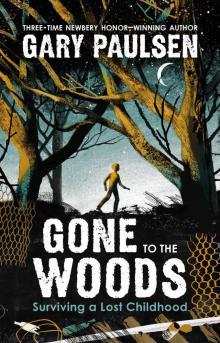 Gone to the Woods
Gone to the Woods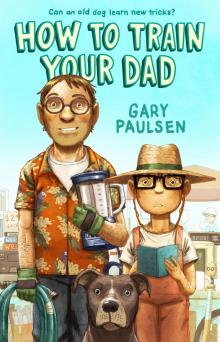 How to Train Your Dad
How to Train Your Dad The Haymeadow
The Haymeadow Amos Binder, Secret Agent
Amos Binder, Secret Agent The River br-2
The River br-2 Amos Gets Married
Amos Gets Married Father Water, Mother Woods
Father Water, Mother Woods Dunc and the Scam Artists
Dunc and the Scam Artists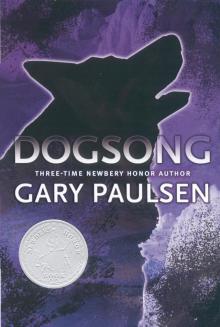 Dogsong
Dogsong Alida's Song
Alida's Song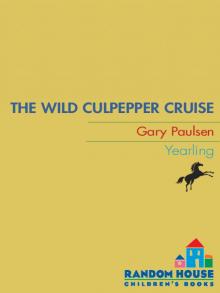 The Wild Culpepper Cruise
The Wild Culpepper Cruise Brian's Hunt
Brian's Hunt Woods Runner
Woods Runner Dunc and Amos on Thin Ice
Dunc and Amos on Thin Ice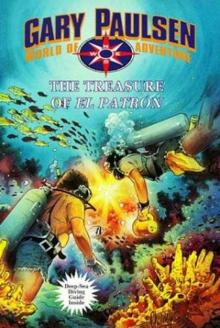 The Treasure of El Patron
The Treasure of El Patron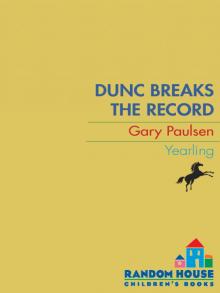 Dunc Breaks the Record
Dunc Breaks the Record Harris and Me
Harris and Me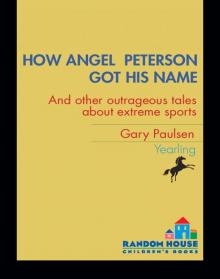 How Angel Peterson Got His Name
How Angel Peterson Got His Name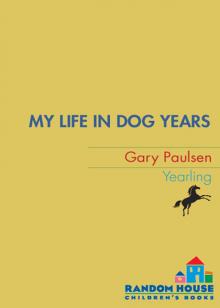 My Life in Dog Years
My Life in Dog Years Tucket's Travels
Tucket's Travels Canyons
Canyons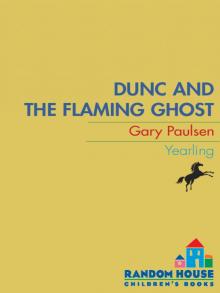 Dunc and the Flaming Ghost
Dunc and the Flaming Ghost The Schernoff Discoveries
The Schernoff Discoveries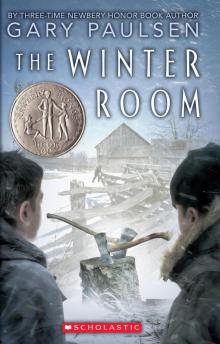 The Winter Room
The Winter Room Road Trip
Road Trip Masters of Disaster
Masters of Disaster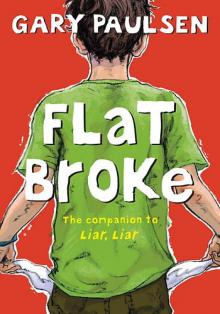 Flat Broke
Flat Broke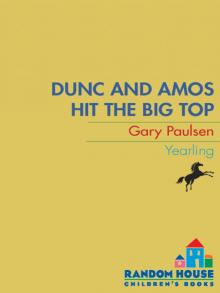 Dunc and Amos Hit the Big Top
Dunc and Amos Hit the Big Top Time Benders
Time Benders Caught by the Sea
Caught by the Sea Dancing Carl
Dancing Carl The Seventh Crystal
The Seventh Crystal The Boy Who Owned the School
The Boy Who Owned the School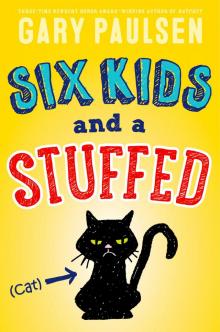 Six Kids and a Stuffed Cat
Six Kids and a Stuffed Cat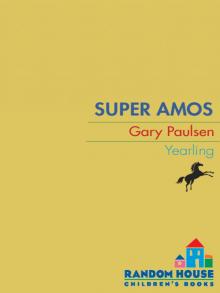 Super Amos
Super Amos Dunc and the Greased Sticks of Doom
Dunc and the Greased Sticks of Doom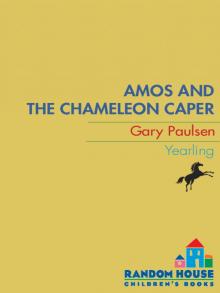 Amos and the Chameleon Caper
Amos and the Chameleon Caper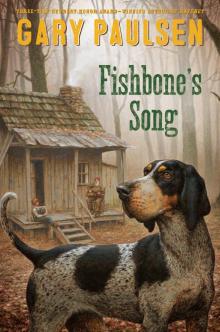 Fishbone's Song
Fishbone's Song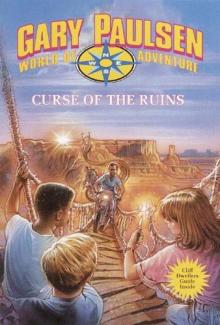 Curse of the Ruins
Curse of the Ruins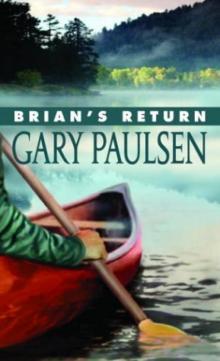 Brian's Return br-4
Brian's Return br-4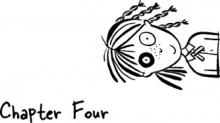 Molly McGinty Has a Really Good Day
Molly McGinty Has a Really Good Day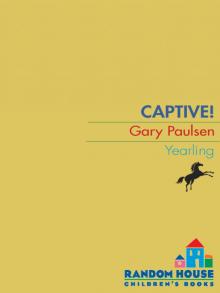 Captive!
Captive! Culpepper's Cannon
Culpepper's Cannon The Car
The Car Puppies, Dogs, and Blue Northers
Puppies, Dogs, and Blue Northers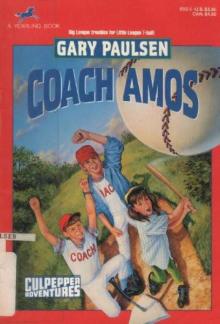 Coach Amos
Coach Amos Mudshark
Mudshark The White Fox Chronicles
The White Fox Chronicles Dunc and Amos Meet the Slasher
Dunc and Amos Meet the Slasher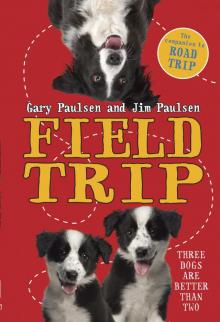 Field Trip
Field Trip The Cookcamp
The Cookcamp Crush
Crush Lawn Boy Returns
Lawn Boy Returns Liar, Liar k-1
Liar, Liar k-1 Thunder Valley
Thunder Valley The Tent
The Tent The Beet Fields
The Beet Fields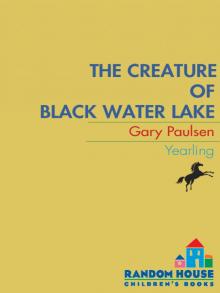 The Creature of Black Water Lake
The Creature of Black Water Lake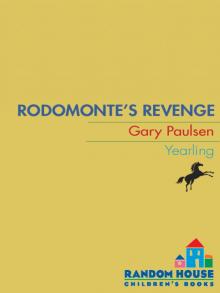 Rodomonte's Revenge
Rodomonte's Revenge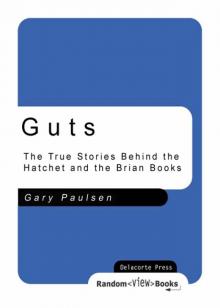 Guts
Guts This Side of Wild
This Side of Wild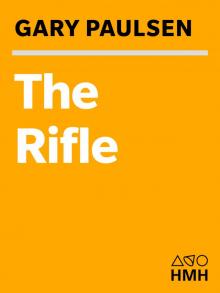 The Rifle
The Rifle The Time Hackers
The Time Hackers Amos Goes Bananas
Amos Goes Bananas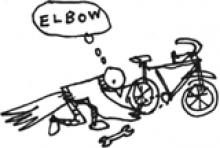 The Amazing Life of Birds
The Amazing Life of Birds Dunc's Undercover Christmas
Dunc's Undercover Christmas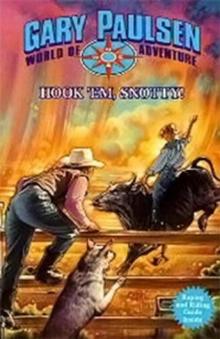 Hook 'Em Snotty
Hook 'Em Snotty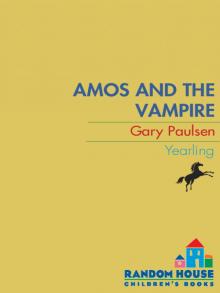 Amos and the Vampire
Amos and the Vampire Danger on Midnight River
Danger on Midnight River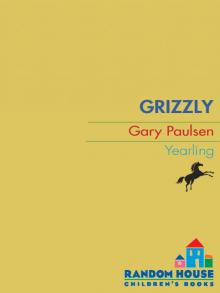 Grizzly
Grizzly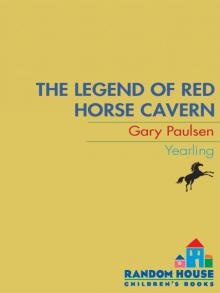 The Legend of Red Horse Cavern
The Legend of Red Horse Cavern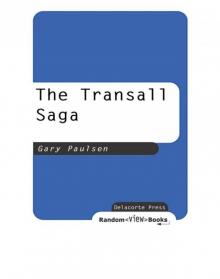 The Transall Saga
The Transall Saga Lawn Boy
Lawn Boy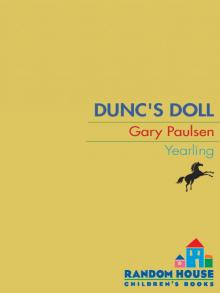 The Case of Dunc's Doll
The Case of Dunc's Doll A Christmas Sonata
A Christmas Sonata Brian's Winter br-3
Brian's Winter br-3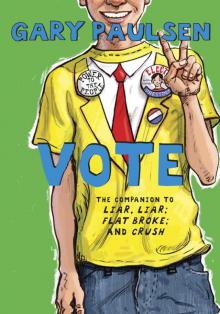 Vote
Vote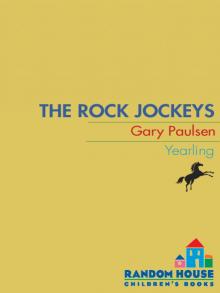 The Rock Jockeys
The Rock Jockeys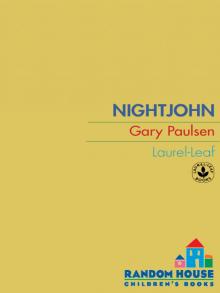 Nightjohn
Nightjohn Escape from Fire Mountain
Escape from Fire Mountain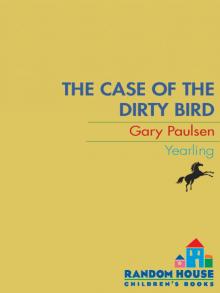 The Case of the Dirty Bird
The Case of the Dirty Bird Brian's Winter
Brian's Winter Amos's Killer Concert Caper
Amos's Killer Concert Caper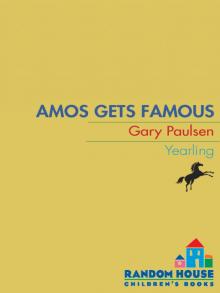 Amos Gets Famous
Amos Gets Famous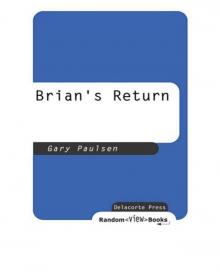 Brian's Return
Brian's Return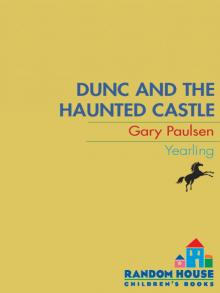 Dunc and the Haunted Castle
Dunc and the Haunted Castle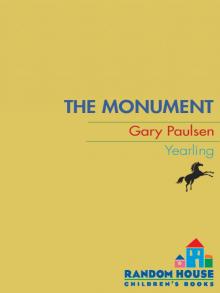 The Monument
The Monument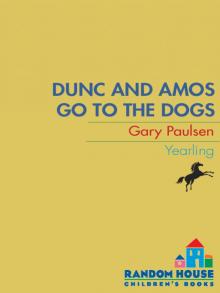 Dunc and Amos Go to the Dogs
Dunc and Amos Go to the Dogs World of Adventure Trio
World of Adventure Trio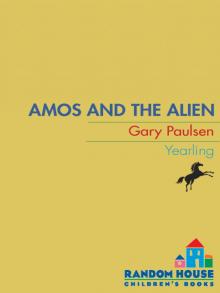 Amos and the Alien
Amos and the Alien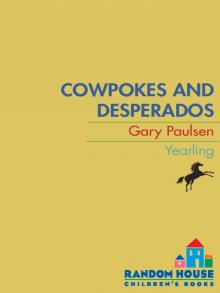 Cowpokes and Desperadoes
Cowpokes and Desperadoes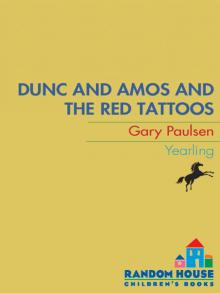 Dunc and Amos and the Red Tattoos
Dunc and Amos and the Red Tattoos Dunc's Dump
Dunc's Dump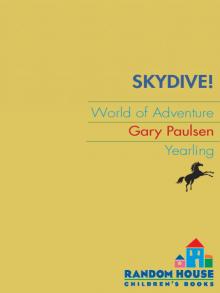 Skydive
Skydive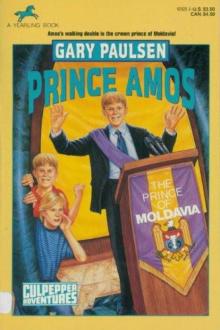 Prince Amos
Prince Amos The Gorgon Slayer
The Gorgon Slayer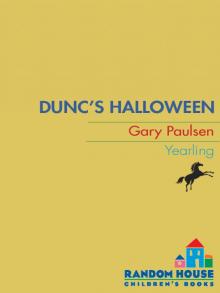 Dunc's Halloween
Dunc's Halloween Flight of the Hawk
Flight of the Hawk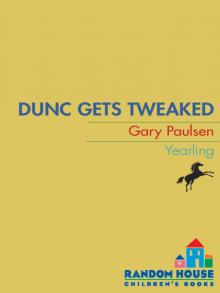 Dunc Gets Tweaked
Dunc Gets Tweaked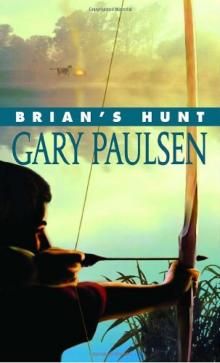 Brian's Hunt br-5
Brian's Hunt br-5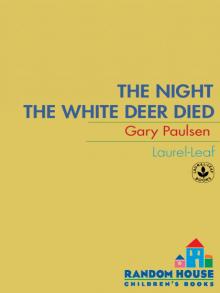 The Night the White Deer Died
The Night the White Deer Died